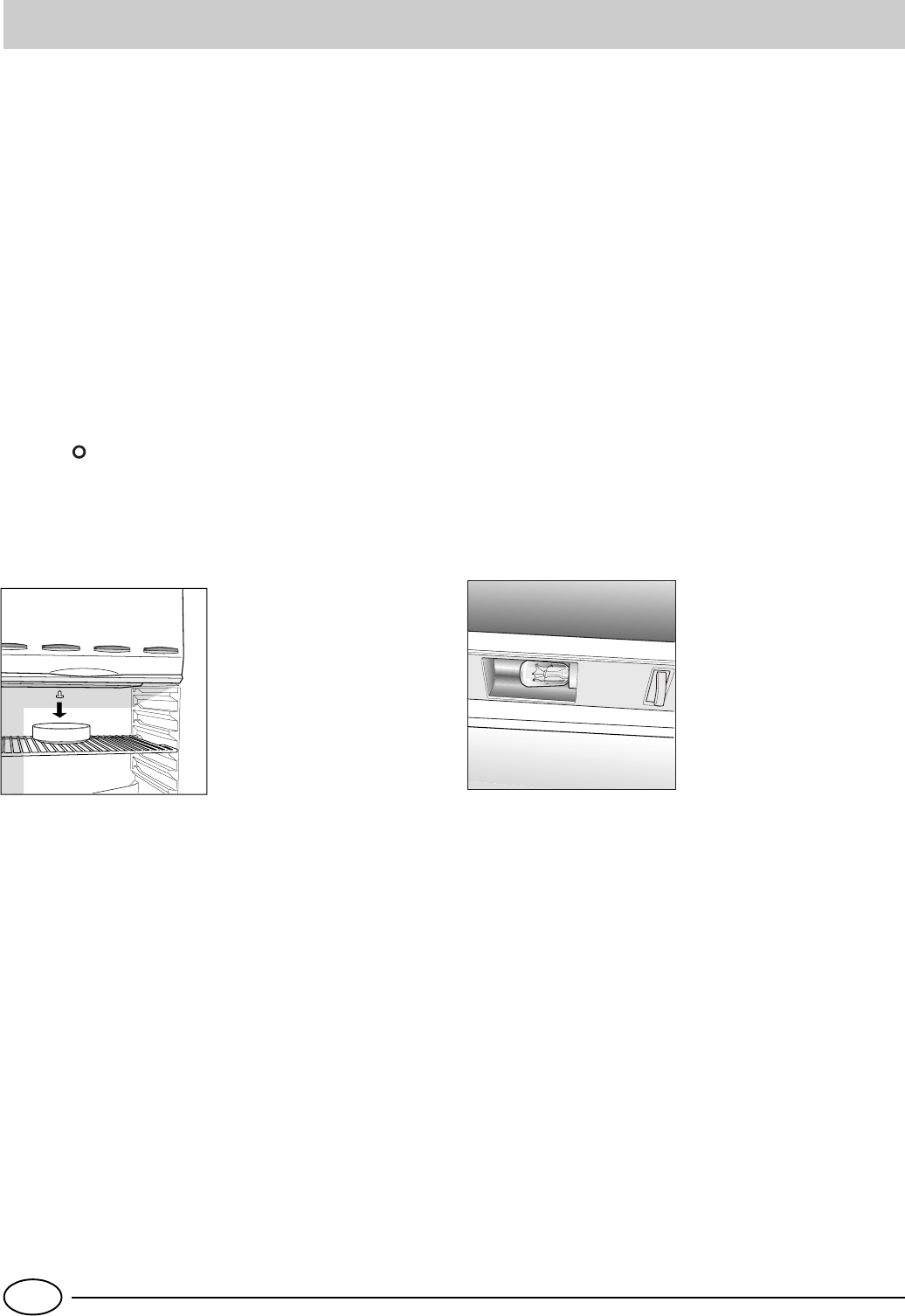
12
GBGB
GBGB
GB
Caring for Your Appliance
Before doing any cleaning, disconnect the appliance
from the electricity (by pulling out the plug or turning
off the general switch in your home).
Defrosting
Do not use mechanical devices or instruments other
than those recommended by the manufacturer to speed
up the defrosting process.
It is advisable now and then to remove the ice which forms
on the evaporator. Take care to not use sharp object for this
purpose since they could perforate the refrigeration circuit
and permanently damage the appliance. Such cleaning is
very important to guarantee a good operation of the
refrigeration and avoid useless energy consumption.
As a rule the appliance should be defrosted at least once
every three months.
To defrost the evaporator completely, turn the thermostat
knob to “ ”. Remove the plug that is in the back part of the
tray and put a container under the opening in order to collect
defrosting water (fig. 2). Then dry the tray and put it back to
its normal position.
To start up the appliance again, move the thermostat knob
to the operating position.
Fig. 3
Fig. 2
Cleaning and Maintenance
- Your appliance is manufactured with hygienic, odourless
materials. To preserve these characteristics, always use sealed
containers to store foods in order to prevent spills, stains and
the formation of difficult to remove odours.
- Only use a water and bicarbonate solution to clean the
applianc. Clean the internal and exterior of your appliance
with a sponge soaked in a warm water and sodium bicarbo-
nate solution, which is also a good disinfectant. If you do not
have any sodium bicarbonate at home, use a neutral soap.
- What not to use: Do not use abrasive detergents, bleach or
detergents containing ammonia. Never use solvent based
products.
- All removable parts can be cleaned by soaking them in hot
soapy water or detergent. Remember to dry them thoroughly
before replacing them.
- Discontinued use of the appliance: If the appliance is not in
use for any length of time, remember to clean the interior
and dry thoroughly, leaving the door open to prevent the
formation of odours and mould.
- Replacing the light bulb. Unscrew the burned out bulb and
replace it with another bulb with a wattage no higher than
15 Watt (fig. 3).


















